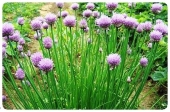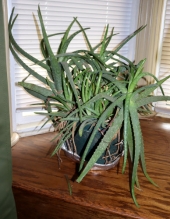
 10
10







Visit Redhawk's soil series: https://permies.com/wiki/redhawk-soil
How permies.com works: https://permies.com/wiki/34193/permies-works-links-threads
 6
6




Jay said, "My second issue is having to take an emergency trip away and I'm so concerned...
Invasive plants are Earth's way of insisting we notice her medicines. Stephen Herrod Buhner
Everyone learns what works by learning what doesn't work. Stephen Herrod Buhner
 5
5




![Filename: Heartleaf-Philodendron-2.jpg
Description: [Thumbnail for Heartleaf-Philodendron-2.jpg]](/t/210566/a/202684/Heartleaf-Philodendron-2.jpg)
My online educational sites:
https://www.pinterest.ca/joelbc/homestead-methods-tools-equipment/
https://www.pinterest.ca/joelbc/mixed-shops/

 6
6




How Permies works: https://permies.com/wiki/34193/permies-works-links-threads
My projects on Skye: The tree field, Growing and landracing, perennial polycultures, "Don't dream it - be it! "
 3
3




Nancy Reading wrote:In my experience plants indoors fail though improper watering. Either you're like me and forget to water at all - after all it's always raining here (but not so much indoors*), or you are over keen and water too much. Apparently many houseplants are drowned by their keen owners.
Invasive plants are Earth's way of insisting we notice her medicines. Stephen Herrod Buhner
Everyone learns what works by learning what doesn't work. Stephen Herrod Buhner
 5
5




 3
3




Do you know if they're more likely to produce fruit if it's cross-pollinated from a different colour flower?Anthony Powell wrote:Epiphyllums and Christmas cacti can sometimes produce fruit after flowering - really tasty, an unpriceable treat! I'd be cautious eating just any cactus fruit, Lophophora is psychoactive.
Visit Redhawk's soil series: https://permies.com/wiki/redhawk-soil
How permies.com works: https://permies.com/wiki/34193/permies-works-links-threads
 3
3




 6
6




Best luck: satisfaction
Greatest curse, greed
 5
5




Zone 6, 45 inches precipitation, hard clay soil




 5
5




I'm not lost because where ever I go there I am and that light at the end of the tunnel is not a train.
 4
4




We really don't know how much we don't know.
 3
3




Lina
https://catsandcardamom.com
 9
9








"Also, just as you want men to do to you, do the same way to them" (Luke 6:31)
 8
8




Hooray for Homesteading!
 7
7




 5
5




Country oriented nerd with primary interests in alternate energy in particular solar. Dabble in gardening, trees, cob, soil building and a host of others.






 3
3




C. Letellier wrote:I will add sansiveria aka mother in laws tongue aka snake plant aka sword plant to the list.(last 2 are semi inaccurate though as there are other plants with the same name) Also on the list of the best air cleaner plants. Thrives on benign neglect. Harder to kill than aloe provided you can avoid over watering. In this house out of direct sun will sometimes go 6 to 8 weeks at a time without water before they start to shrivel. Since the spider plant starts showing it sooner it is my warning. If the spider plant is dying then I need to water the aloe and the sansiveria too.
"Also, just as you want men to do to you, do the same way to them" (Luke 6:31)
 6
6




Invasive plants are Earth's way of insisting we notice her medicines. Stephen Herrod Buhner
Everyone learns what works by learning what doesn't work. Stephen Herrod Buhner




 4
4




 2
2










 2
2




Betsy Carraway wrote:Made an error: Sanseveria, not dracaena.
"Also, just as you want men to do to you, do the same way to them" (Luke 6:31)
 3
3




Jotham Bessey wrote:Aloe Vera - keep it out of direct sun and water it occasionally. Not need for set watering schedule.
Micro Dwarf tomatoes - needs watering often but the fruit is sooooo tasty! even better that the home grown regular cherry tomatoes.
 5
5





“Live as if you were to die tomorrow. Learn as if you were to live forever.” ― Mahatma Gandhi






 3
3




You want any excess water to drain through the soil and escape at the container's bottom into a receptacle (dish/tray) underneath. I'd recommend against potting it in rich organic soil as indoors such soils, over time, can develop fungal problems.
... A lot of very accomplished indoor-plant growers recommend a coarse soil with lots of perlite mixed in to aerate it.
My online educational sites:
https://www.pinterest.ca/joelbc/homestead-methods-tools-equipment/
https://www.pinterest.ca/joelbc/mixed-shops/
 4
4










 5
5




My online educational sites:
https://www.pinterest.ca/joelbc/homestead-methods-tools-equipment/
https://www.pinterest.ca/joelbc/mixed-shops/






 3
3




Joel Bercardin wrote:Here's a video by a container-plant expert showing a way to solve one common problem faced by indoor plant growers. I realize that this method may seem extreme to some people, or rather "advanced" and not for beginners. But this information seems to me quite worth knowing and comsidering.
https://www.youtube.com/watch?v=wTBhy5RH8hs
"Also, just as you want men to do to you, do the same way to them" (Luke 6:31)

 5
5






- Tim's Homestead Journal - Purchase a copy of Building a Better World in Your Backyard - Purchase 6 Decks of Permaculture Cards -
- Purchase 12x Decks of Permaculture Cards - Purchase a copy of the SKIP Book - Purchase 12x copies of Building a Better World in your Backyard
 2
2




Timothy Norton wrote:If you want something that utilizes more frequent watering and you can provide it decent sun, then consider dragon fruit! I find they grow like gangbusters under supplemental light and really fill out a pot.
Visit Redhawk's soil series: https://permies.com/wiki/redhawk-soil
How permies.com works: https://permies.com/wiki/34193/permies-works-links-threads












 2
2




- Tim's Homestead Journal - Purchase a copy of Building a Better World in Your Backyard - Purchase 6 Decks of Permaculture Cards -
- Purchase 12x Decks of Permaculture Cards - Purchase a copy of the SKIP Book - Purchase 12x copies of Building a Better World in your Backyard
 4
4




Timothy Norton wrote:My understanding is that every stem has the potential for producing fruit. I however haven't seen any flowers and I am approaching my second year. Just plenty of stems. I can't say that I have looked too deep into the process however, maybe I should?
Visit Redhawk's soil series: https://permies.com/wiki/redhawk-soil
How permies.com works: https://permies.com/wiki/34193/permies-works-links-threads
 6
6




Life's too short, eat desert first! [Source of quote unknown]
You have to be warped to weave [ditto!]
 1
1




God so loved the world that He gave his only son that whoever believes in Him shall not perish but have everlasting life.
 1
1




John Threesixteen wrote:Zz plant Zamioculcas zamifolia
Put it in the darkest corner and water it every 3-4 months. Put it in bright light and water it once a week maybe. Wherever you put it the leaves stay dark glossy green.
Visit Redhawk's soil series: https://permies.com/wiki/redhawk-soil
How permies.com works: https://permies.com/wiki/34193/permies-works-links-threads
 3
3




Zone 6, 45 inches precipitation, hard clay soil





|
Beauty is in the eye of the tiny ad.
The new purple deck of permaculture playing cards
https://www.kickstarter.com/projects/paulwheaton/garden-cards
|







